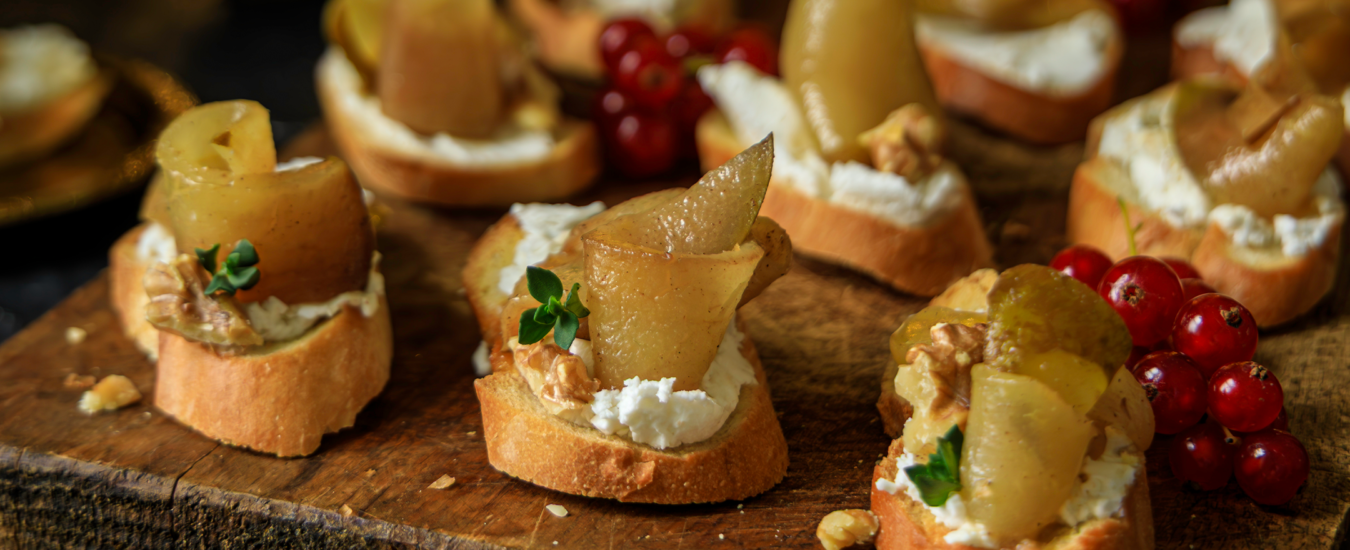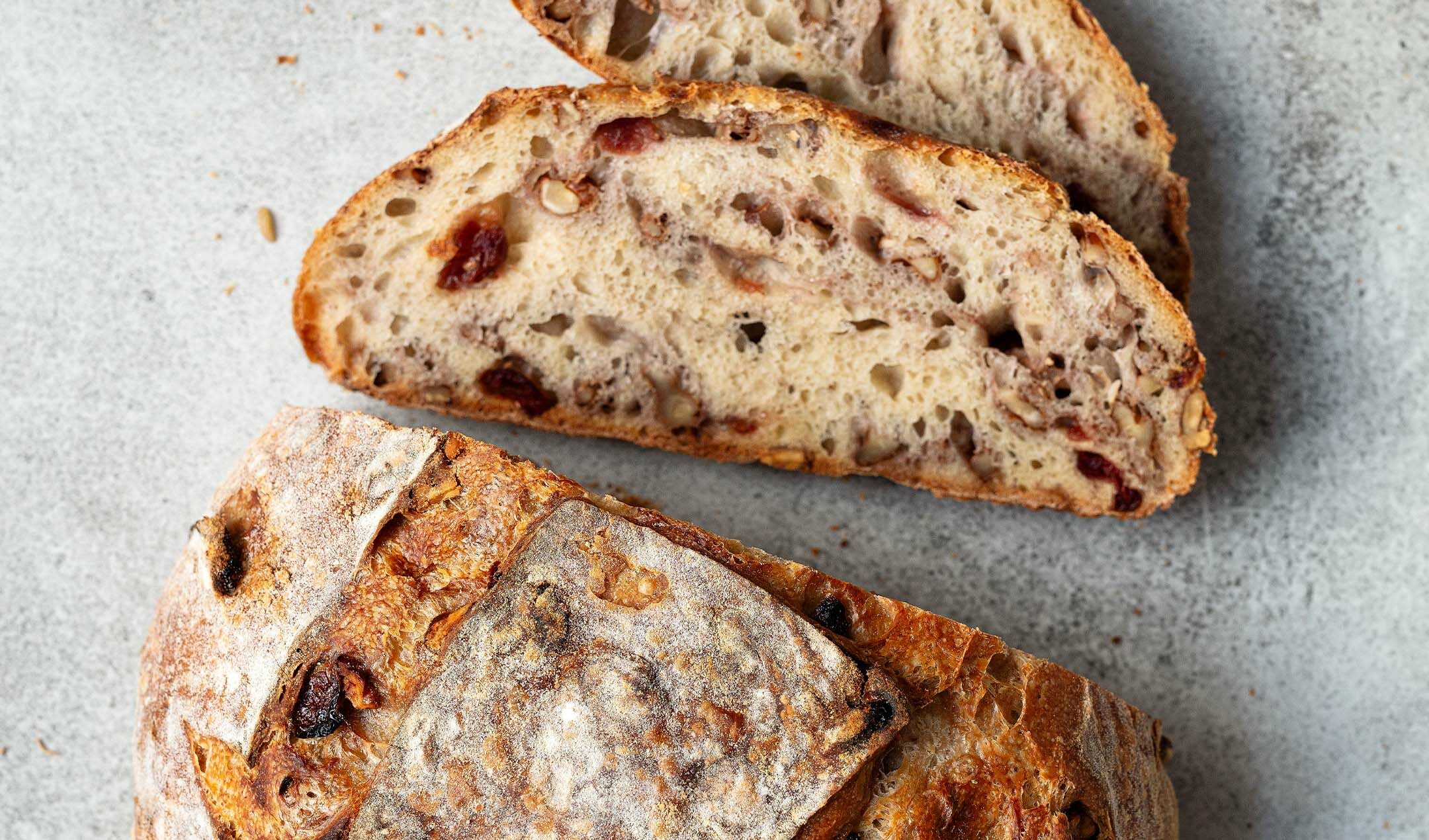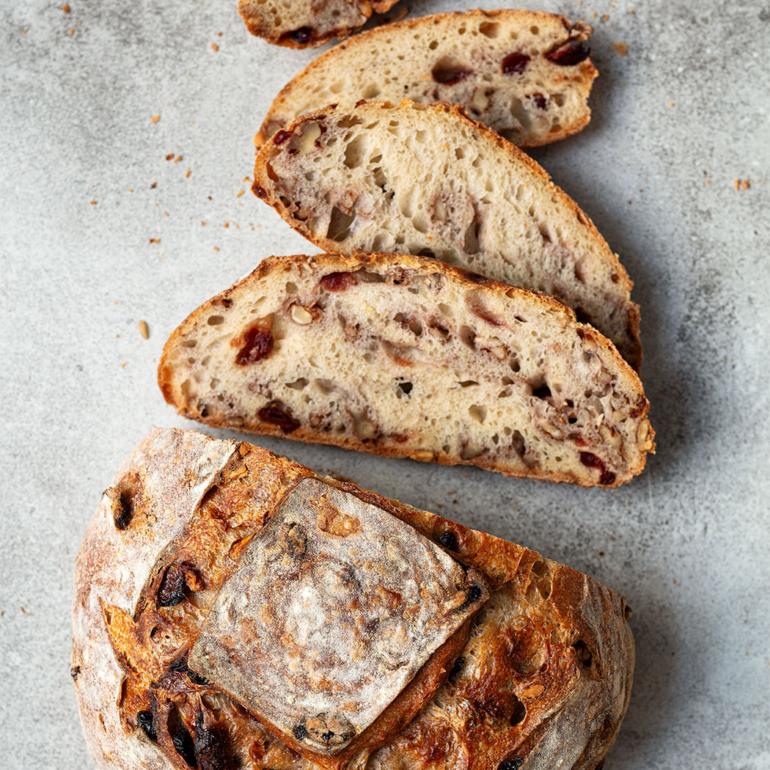Makes 1 large loaf
adjust servings:
Tick the ingredients you need to add your shopping list.
- Mix together the starter, flour and 345ml of the water. Squeeze the mixture through your fingers until everything is moistened, scraping any dry bits from the sides of the bowl. Cover and rest for 30 minutes.
- Add the salt to the remaining 25ml water and pour over the dough. Squeeze the dough to help incorporate the liquid and salt. At this stage the dough will separate a little due to the added water, but just keep folding the dough until it comes together fully.
- Use a damp hand to scoop under the dough, lifting it up, gently stretching until you feel some resistance, then fold it over itself. Rotate the bowl 90 ̊ and stretch and fold again. Repeat until you come back around to where you started, then cover and leave for 30 minutes. Repeat the stretching and folding four times over the next two hours. If you feel the dough hasn't enough strength yet, repeat the stretch and fold once more. It should be smooth and strong by the last one. Leave to rest for two hours.
- Lightly flour your countertop and use a plastic dough scraper to remove the dough gently from the bowl. At this stage the underside of the dough is floured but the top is still sticky. Flatten out the dough and add the nuts and cranberries. Using lightly floured hands do a brief preshape. Go underneath the dough and fold it over itself multiple times as you go around, forming it into a rough circle. Turn the dough over, cover with a clean towel and leave to relax for 20 minutes.
- Meanwhile, prepare a proving basket or bowl. If using a traditional cane basket, lightly dust with rice flour. If you don’t have a basket, you can use a mixing bowl. Line the bowl with a clean kitchen towel and dust that with flour.
- Lightly dust the top of the dough with flour, then and turn the dough over.
- Think of the dough as a clock. Gently lift and stretch the nine o'clock of dough up and over towards the three o'clock point, then lift and stretch the three o'clock point up and back over towards the nine. Do the same moves between the six and 12 o’clock points. Turn the dough over so the seams are on the worksurface.
- This rough shape now needs to be tightened up a little. Using both hands and keeping them in contact with the work surface the whole time, cup the dough and drag it towards yourself about 15-20cm. The dough should drag along the work surface and you should feel the ball tighten up. Rotate the dough 90 ̊ and repeat the dragging, doing this a few times until the dough is taut and round. Be careful at this stage as doing this too many times will tear the dough.
- Carefully lift the dough and turn it into a proving basket; the seams should be showing upwards. Allow to rest at room temperature for 3-4 hours, or cover with a cloth and place in the fridge overnight (we recommend this longer, slower proving time).
- Preheat the oven to 240 ̊C/220 ̊C fan/gas mark 8 with a lidded cast iron pot or casserole dish inside.
- Carefully remove the pot and turn your loaf into it. Use a sharp knife to slash an X or a square shape into the top of the dough.
- Bake for 15 minutes, then remove the lid and bake for 30 minutes longer. Check the loaf by tapping on the bottom — it should sound hollow. If it’s not ready, return it to the oven for a further 10 minutes. Remove from oven and allow to cool fully before slicing.
Click here for our delicious recipe for sourdough doughnuts!
Nutrition Facts
Per Serving: 216kcals, 5.7g fat (0.4g saturated), 34.3g carbs (1.3g sugars), 7.8g protein, 2.3g fibre, 0.361g sodium
Popular in Christmas
 Caramelised pear & goat’s cheese crostinis by EUROSPAR
Caramelised pear & goat’s cheese crostinis by EUROSPAR

